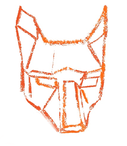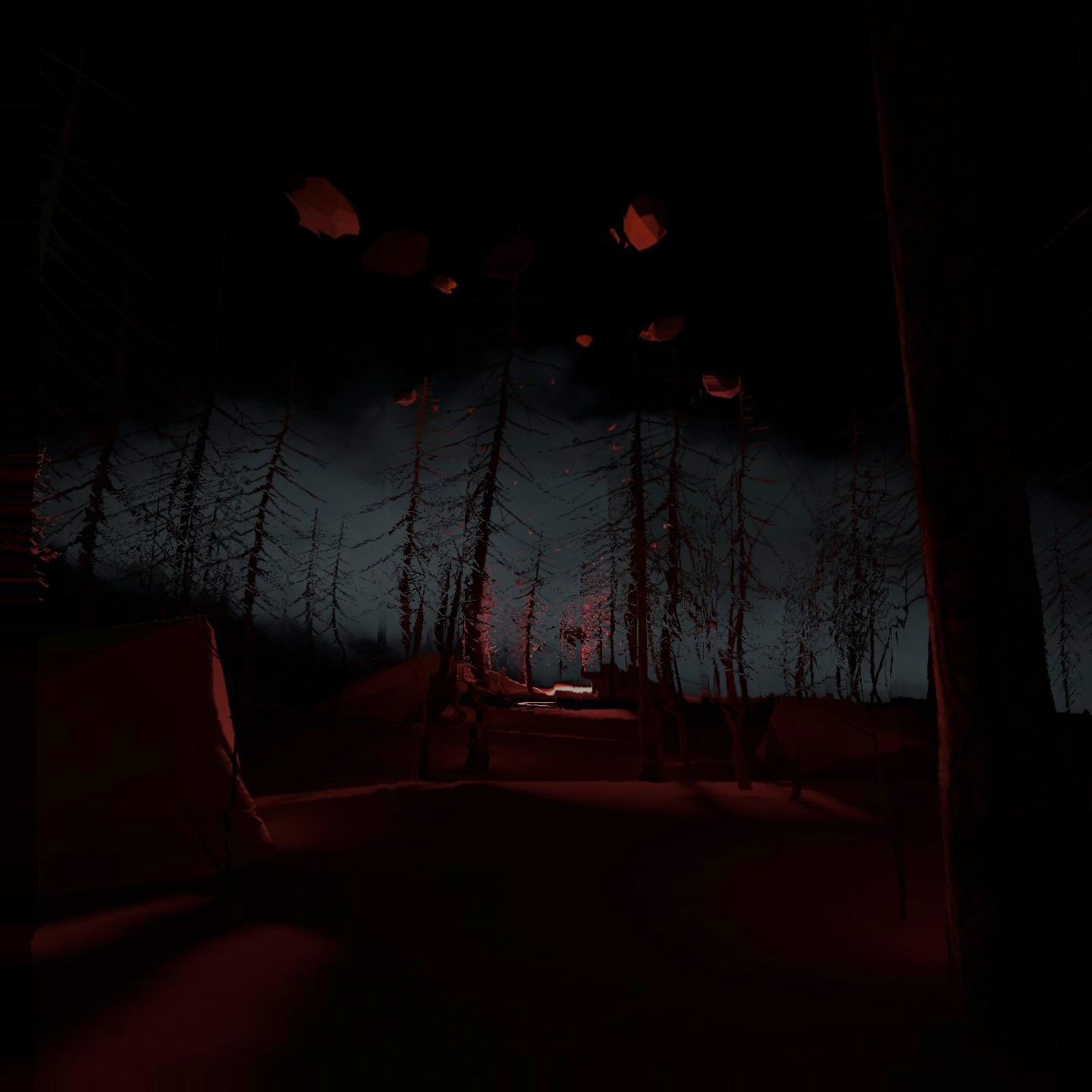Intermezzo - The Woods
“Nel mezzo del cammin di nostra vita
mi ritrovai per una selva oscura
ché la diritta via era smarrita.
Ahi quanto a dir qual era è cosa dura
esta selva selvaggia e aspra e forte
che nel pensier rinova la paura!”
Dante, La Divina Commedia, Canto 1
The Woods are a space, a narrative theme, and a recurring play mode (or recurring “level” in the game engine version). They represent the entire playable space which the characters can explore. They are also present in the musical theme of the larp, and they set the stage for the introspective moments experienced in between each roleplaying act. Such moments allow the characters to fully take in the mystical woodland.
One of the first invaluable comments that sound artist Trond Lossius made to me during an artistic fellow meetup about Lone Wolves Stick Together was that its construction was reminiscent of the ritornello, a musical structure with a returning motive that contrasts with the other parts of the piece. For instance, a ritornello would include the full orchestra, or on the contrary less or different instruments, be in a different key, at a different tempo, etc. While the players keep discovering new Acts to roleplay, interact with the environment, and use narrative techniques, the Woods allows players to return to a contemplative slow place where they can hardly interact with one another and must instead focus on listening. Like ritornellos, each return to the Woods has slight variations, and those changes represent the progression of the journey following the orbit of the Chamber. For instance, when working with Carl Svensson in 2022 on the sound for the VR prototype developed with Breach, we added a theme of three notes doubled with a droning pulsation that intensifies when going from an environment to the next and represents the pull of the Chamber. Another way of representing the progression was found by Breach VR artist Louai Al-bitar who designed floating rocks which multiply in the sky at each return to the Woods.
Besides being an exciting creative constraint, the ritornello structure was designed with the intention to make the VR experience less tiring, providing critical pauses in the roleplaying activity to players less used to the format. Similarly, the individual narrations are both meant to reinforce the atmosphere of the Woods, and to give ideas and inspirations for the players to shift their moods and play on different themes.
“The Woods are the place you go to if you want to lose yourself.”
“The Woods are the place where people who lost themselves end up going.”
“All laws are different in the Woods. Both physics and morals.”
“The Woods are a physical translation of moral laws, and the Chamber is their authority.”
“There’s a Chamber in the Woods that defies fate to fulfill your deepest desire.”
By taking more control over the narrative rhythm, the players and the facilitator also become an expression of the Woods — an omniscient entity that can challenge its visitors, and decide which temporality takes the lead and when it is time to leave.
In the current VR prototype version of the larp, the facilitator has a lot of impact on the pace of the scenes, while the physical version leaves it in the hands of the players. In VR, I often cut the scenes short to make sure they move fast enough and the players’ screen fatigue is kept to a minimum... Regretfully, this decision comes at a cost, since I’d much rather let the collective co-create the playable space. I’d much rather let them drag out their scenes to boredom and find some slowness, some intimacy, and perhaps some hidden gold.
The Woods are a manifestation of the characters’ life and needs. Their where is their when. It is what Barthes calls “le milieu de la vie” (the middle of life) (Barthes, 1978) and what Dante calls the “selva oscura” (the dark forest) (Dante, 1321). It is a moment where life seems locked in a painful or meaningless redundancy, when we cannot overcome its many grievances. The way to shake that state is to find the Vita Nuova (the new life); to embark on a journey and to change.
I dream of the VR Woods being fully reactive to players' presence and movements. The trees should distort as the players look up, and the ground should pulsate and track their chthonic rhythms as they look down. I dream that symbols would be scattered around, prompting long drifts and different game modes. I dream they would all organically evolve from nature, to industrial remains, to computer, as the characters get closer to the Chamber. And I dream for the players to be able to mix their own soundscape by orienting themselves between localized musical tracks. I wish for the voice of the Woods — the one they hear in their headsets — to be of indiscernible identity, glitchy, queer, clear and beautiful.


